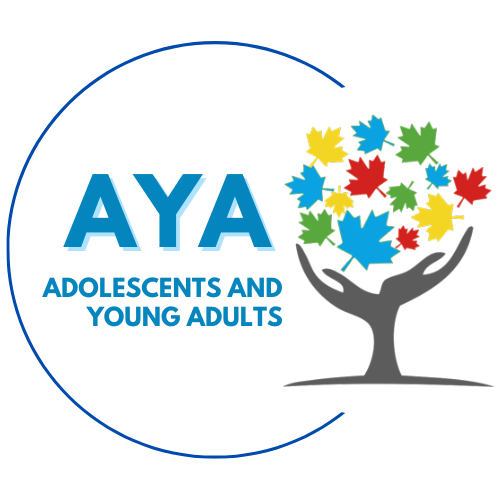Go to family friendly version
| Diagnosis | Glioblastoma | Study Status | Open |
| Phase | I |
| Age | 18 Years and older | Randomisation | NO |
| Line of treatment | First line treatment, Disease relapse or progression |
| Routes of Treatment Administration | Drug: RO7428731, intravenously (IV) |
| Last Posted Update | 2024-06-21 |
| ClinicalTrials.gov # | NCT05187624 |
International Sponsor
Hoffmann-La RochePrincipal Investigators for Canadian Sites
Princess Margaret Cancer CentreCentres
Study Description

This is an open-label, multicenter study to assess safety, tolerability, pharmacokinetics (PK), immunogenicity, pharmacodynamics (PD), and preliminary efficacy of RO7428731 administered as a monotherapy in participants with newly diagnosed or recurrent epidermal growth factor receptor variant III (EGFRvIII)-positive glioblastoma (GBM).
Experimental: Part I: Dose Escalation
Participants with newly diagnosed GBM will receive RO7428731, intravenously (IV), up to one year or until disease progression, withdrawal of consent, unacceptable toxicity, or death, whichever occurs first.
Experimental: Part II: Dose-Expansion(s)
Participants with newly diagnosed GBM will receive RO7428731, IV, in maximum of two dose expansion cohorts at a dose(s) not exceeding the maximum tolerated dose (MTD) established in Part I.
Experimental: Part III: Safety Run-in
Participants with recurrent GBM will receive RO7428731, IV in a dosing schedule determined in Part I. At the end of the Safety Run-in period, a decision will be made as to whether to open the Dose-Expansion Cohort Part IVA or open a second Safety Run-in Cohort at a lower dose.
Experimental: Part IV A: Dose-Expansions Cohort
Participants with recurrent GBM will receive RO7428731, IV at specified doses and dosing schedules.
Inclusion Criteria
Inclusion criteria for all participants:
- Life expectancy of greater than or equal to 12 weeks, in the opinion of the Investigator
- Diagnosis of GBM based on World Health Organization (WHO) classification of central nervous system (CNS) tumors, 5th edition
- Participants must have confirmed EGFRvIII-expression
- Karnofsky Performance Status (KPS) Score of >=70%
- Adequate organ functions prior to start of study treatment
- Willingness to abide by contraceptive measures for the duration of the study.
Inclusion criteria for Part I and Part II only:
- Participants whose tumors have an unmethylated (Part I and Part II) or methylated (Part I only) O6-methylguanine-DNA methyltransferase (MGMT) promotor status based on local assessment
- Participants (in Part I): Adult participants with newly diagnosed EGFRvIII-positive GBM with unmethylated MGMT promotor status who have completed standard of care therapy with surgical resection and adjuvant radiotherapy with or without concomitant temozolomide. Participants are allowed to have received any number of cycles of temozolomide maintenance. Adult participants with newly diagnosed EGFRvIII-positive GBM with methylated MGMT promotor status who have completed standard of care with surgical resection and adjuvant radiotherapy with concomitant and maintenance temozolomide or discontinued temozolomide maintenance due to reasons other than progressive disease.
- Participants (in Part II): Adult participants with newly diagnosed EGFRvIII-positive GBM with unmethylated MGMT promotor status who have completed standard of care therapy with surgical resection and adjuvant radiotherapy with or without concomitant temozolomide.
Inclusion criteria for Part III and Part IV A only:
- Documented first or second recurrence of GBM
- At least one measurable GBM lesion as per Response Assessment in Neuro-Oncology (RANO) criteria prior to initiation of study treatment.
Exclusion Criteria
Exclusion criteria for all participants:
- Participants with infratentorial tumors and tumors primarily located in or close to critical structures (e.g., brain stem)
- Presence of extracranial metastatic or leptomeningeal disease
- Known hypersensitivity to immunoglobulins or to any other component of the investigational medicinal product formulation
- Active bleeding or pathological condition that carries a high risk of bleeding, including inherited and acquired coagulopathies
- Participants unable to undergo an MRI with contrast.
Exclusion criteria for Part I and Part II only:
- Recurrent malignant gliomas
- Any prior anti-tumor treatment for GBM: tumor resection, adjuvant radiotherapy with or without concomitant temozolomide and temozolomide maintenance (Part I only) must be the only tumor-directed treatment that the participant has received for GBM.
Exclusion criteria for Part III and Part IV A only:
- More than two recurrences of GBM
- Prior anti-EGFRvIII-targeting agents (including vaccines), anti-angiogenic therapy, and/or gene therapy for the treatment of GBM and gliomas.